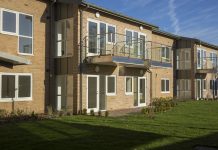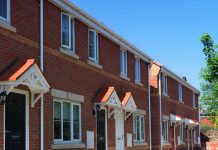Jean Hewitt, Director of the Centre for Accessible Environments examines the new housing standards and explains how we can achieve accessibility in our housing stock to meet the needs of our diverse and ageing population…
Housing is never out of the news these days – the lack of it, the cost of it, and the quality of it. Housing design can heavily influence our quality of life and the communities we create, it can increase or relieve NHS bed-blocking. Yet people rarely give much thought at the outset to how adaptable their new home is and how well it might meet their needs in the future, such as when starting a family, or growing older.
For many years, across Greater London and in some other areas of the country, planners have wisely seen the difference that flexible housing can make and have adopted Lifetime Homes and wheelchair housing design standards for at least a percentage of new build. In London, these standards are required for all new housing and even some adaptations and conversions. Lifetime homes can be easily adapted to meet a variety of needs because they have been designed with the flexibility for change. The challenge has always been how to ensure they are built as intended, because there has never been any regulations to cover this.
In October, however, we saw the introduction of new accessible housing standards for the first time in Building Regulations. The new Volume 1 Approved Document to Part M explains how the new standards can be achieved. The standards have three categories; Categories 2 and 3 being broadly equivalent to Lifetime Homes and wheelchair housing standards respectively. The move to building regulations is sensible and welcomed by developers as theoretically it will harmonise standards across the country to three categories only.
So far so good. However, Categories 2 and 3 are optional for each local authority planning department to decide upon, and they can only demand the optional Categories 2 and 3 if such a requirement is set out in their Local Plan. In order to include the requirement in the Local Plan, there must have been a local needs assessment and viability must be assured.
Herein lies the main challenge.
Transitional arrangements have happily enabled London and a few other authorities who already had such standards in their Local Plan to simply “passport” these across to the new standards. Sadly, any local authorities without such a provision previously, now have a great deal of work to do. They need to gather evidence and undertake viability assessments if they wish to adopt the ‘optional’ Category 2 & 3 standards into their local plan and prove that the need exists in their local area. Most local authorities lack readily available data sufficient to satisfy the evidence of local needs so this is unlikely to be a quick process. Consequently, despite good intentions, the arrangements are causing difficulties and no doubt there will be significant delays before many are able to introduce the provisions into their local plan.
Optional standards are new to building regulations so this is confusing to many professionals. The standards are not optional to the designer, builder or developer but are dictated by the planning authority through planning conditions (but only after they appear in the Local Plan). Designers will also need to ensure dwellings can accommodate the dimensional requirements at an early enough stage to satisfy both planning and building control, (usually further detail is added after the planning stage).
A summary of how it all works:
There are 3 categories within Approved Document M which apply only to new build dwellings. Planning conditions will specify which category applies to each dwelling and building control will then inspect and regulate. The applicant is responsible for informing building control of which conditions apply.
Category 1: Visitable dwellings
Category 1 is the standard contained within the earlier Building Regulations Approved Document. It provides a very minimal level of access and no future-proofing for future adaptations. If no category is specified by the planning authority then Category 1 is the default which will be applied by building control.
Category 2: Accessible and adaptable dwellings
Category 2 is broadly equivalent to Lifetime homes and many have called for this to be the default standard. The name of this category is being confused with wheelchair user dwellings (Category 3) because this has two sub-categories named “accessible” and “adaptable”. (Many people are consequently already referring to the Category 2 standard as Lifetime Homes since this term is more readily understood).
The most significant difference between Category 2 and Lifetime Homes is that step-free access is required to all properties. Whilst this may seem sensible, if the lift is not financially viable, then Category 1 applies, with the loss of many beneficial design elements for older and disabled people, such as flexibility to easily add grab rails or a level access shower.
Category 3: Wheelchair user dwellings
This category is split into 2 further sub-categories; a) wheelchair adaptable and b) wheelchair accessible (hence confusion with the name of Category 2). Designers seem to expect a difference in spatial allowances, but there is no difference in the overall property footprint or the room sizes required between an “adaptable” and an “accessible” wheelchair user-dwelling. Also, designs need to show how the accessible standard is met and then some features can be adjusted for the adaptable version.
The level of detail and spatial planning needed for these dwelling types is significant, and there are challenges for the architect to ensure that the spatial requirements are incorporated at an early stage in the design. Our experience through training professionals in this area is that working through the Approved Document in isolation is not enough, training is needed to avoid common misinterpretations.
Conclusion
So will these standards improve the accessibility of our housing stock and meet our needs for a diverse and ageing population?
Introducing inspections and sign-off through building control is widely welcomed but there is much disappointment that the Category 2 standard (broadly Lifetime Homes equivalent) is not the default standard, as this would have dramatically improved the accessibility and flexibility of all future housing stock, enabling many people to remain in their own homes for longer despite changing needs.
Local authorities are currently frustrated at the information needed in order to incorporate accessible housing requirements within their local plans and this will result in a time lag before the optional categories can be introduced.
However, some help is at hand:
Habinteg, in partnership with the Town and Country Planning Association has produced a free toolkit for Planning Policy teams: www.habinteg.org.uk/tah-toolkit
CAE runs regular public and in-house CPD training courses on the new standards. http://cae.org.uk/training/our-training-courses/
CAE, Habinteg and others will be watching closely to see the impact of the new standards on the number of accessible new homes built as the sector reaches for the challenge of delivering not only the number of homes that we need, but the quality and flexibility that will see us into the future. ■
. . . . . . . . . . . . . . . . . . . . . . . . . . . . . . . . . . . . . . . . . . . . . . .
Jean Hewitt
Director
Centre for Accessible Environments
Tel: 020 7822 8232











